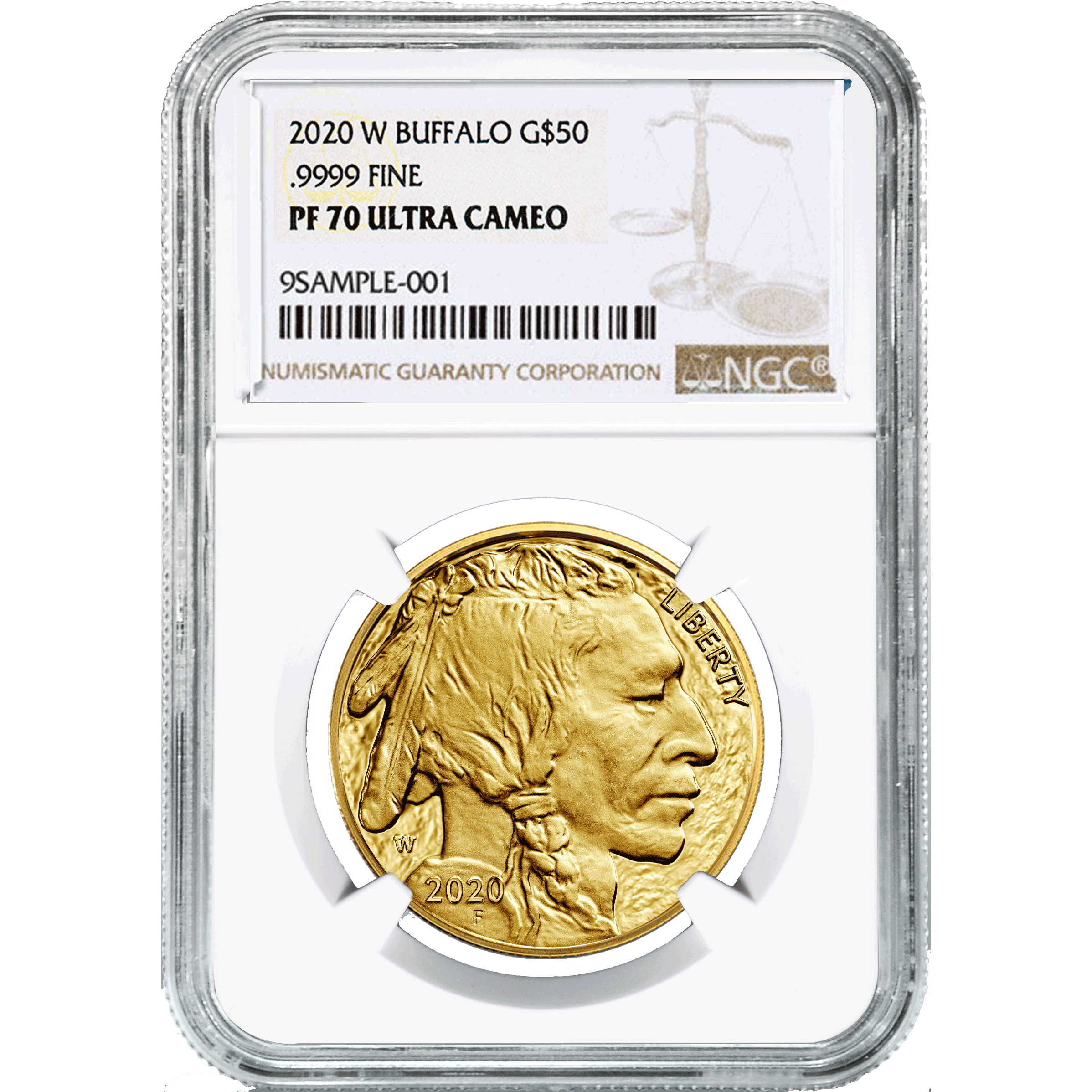Modern Numismatics
Modern Numismatics, Defined
Most often, modern numismatic coins we offer are gold, silver, platinum, and palladium coins issued by the United States Mint since 1986. We generally distinguish these from historic and rare United States coins issued in dates 1933 and earlier, the year in which the US government recalled gold coins amidst the Great Depression. Some silver coins occupy the interim between 1933 and 1986 but this time period generally defines the gap between modern and historic coins as we discuss them.
Modern coins with numismatic (collector) interest and value are most often coins with low mintage and/or low populations in grade-certified specimens. Typically, individual coins in this category will be offered as a high grade specimen certified by a top-tier grading service (NGC or PCGS). Sealed mint rolls or cases of ungraded coins are a great opportunity for investors and collectors to purchase coins at bullion-issue price levels with the opportunity to trade intact or submit for professional grading.
Opportunity That Rivals Rare and Historic Coin Markets
The advent of third-party coin grading, beginning in the 1980s and blossoming in later decades, revolutionized the collector market in rare and historic coins. As the importance of independent grading became apparent, people slowly began submitting modern issue American Eagle coins to the top grading services. Many initially scoffed at the idea, but momentum continued until a robust collector market developed and continues to expand today.
Top Performers
For examples of this phenomenon, one need look no further than to the humble silver dollar - the American Eagle Silver coin, which the US Mint began striking in 1986. A 1999 dated coin in pristine MS70 condition can command a scarcely-believable $23,000. Six other dates can command over $6,000 for a pristine example.
The $25, half-ounce American Eagle Gold coin is another great example. It is consistently struck in lower numbers than the other three sizes the Mint produces. Of the 33 issues the Mint has struck, fully one third can now command $4,000 or more - up to $18,500 for the 1990 date in flawless condition.
That’s pretty amazing, and it’s a small wonder that more people do not know about the phenomenon. For many who do know about it, there’s a psychological barrier to thinking of a coin with easy availability today as one that can gain value so quickly. To be sure, not all dates graded in pristine condition rise in value in such spectacular fashion. But there’s more than luck involved in picking winners.
Spotting the Winners
The most reliable predictor of a modern issue coin’s potential to rise in value is the mintage total for the year. The Mint does not announce the final number until well after the end of the year, by which time the coin is likely to be unavailable at the lowest price level. There are signs, clues, and some indirect data the Mint makes available, and Global Gold keenly monitors all available information. When signs point to a low mintage number, clients are alerted and presented with the opportunity to acquire the coin.
Global Gold professionals are among the industry leaders in research and intelligence on modern United States investor coins. You can rely on us to point out coins with true potential, year in and year out.
Related products
Real Results
$25 American Eagle Gold
*NGC Price Guide, MS-70 specimen †PCGS Price Guide, MS-70 specimen NGC/PCGS pricing current as of June, 2019
$1 American Eagle Silver
NGC pricing current as of October, 2018



